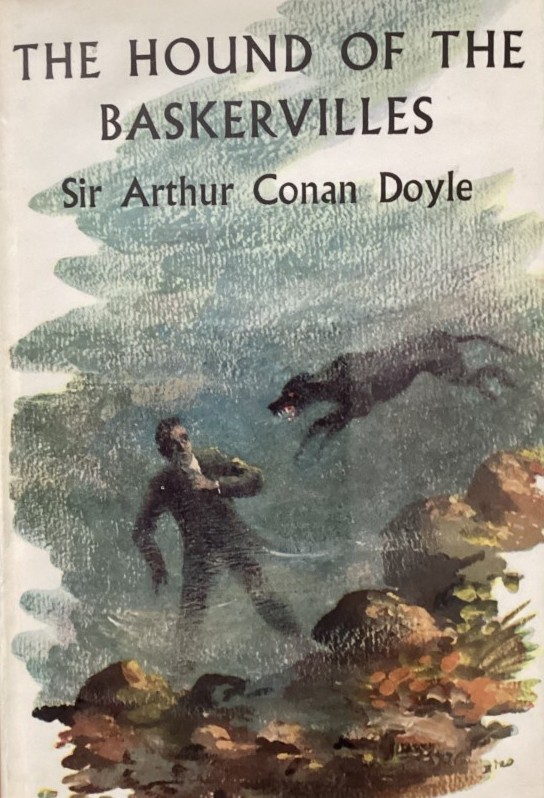Inspiring Older Readers
 posted on 02 Feb 2023
posted on 02 Feb 2023
The Hound of the Baskervilles by Arthur Conan Doyle
Given the huge range of cinema and television adaptations that have been done of Conan Doyle's The Hound of the Baskervilles, I would guess that the majority of people interested in reading the novel will already be familiar with the central story – and how the mystery resolves itself. That was certainly the case for me and my decision to finally getting around to rereading the book was driven by a desire to know whether Doyle’s storytelling is more complex than we get from the films and, crucially, whether the master detective’s encounter with the great hound is as terrifying as the promotional advertising always claims.
There are only a handful of full-length Sherlock Holmes novels because the majority of stories were written for publication in monthly instalments for The Strand magazine whose sales grew rapidly with the first publication of Doyle’s stories in 1891. And, although The Hound of the Baskervilles was published in novel form in 1902, it had in fact been first published in parts by The Strand across 1901 and 1902. So, in many ways, it helps to think of The Hound as a compilation of these monthly instalments rather than a single, coherent story and in that way some of the clumsiness in plotting and the odd ebb and flow of the tension becomes much easier to understand.
The actual central story is in fact quite a simple one. When Holmes and Watson are approached by Dr Mortimer with a story telling of the untimely death of Sir Charles Baskerville, the detective is intrigued to hear that the tragedy is being attributed to the legend of a Hellish great hound that has stalked the Baskerville family over the generations. Sir Charles, it is claimed, died of sheer terror when confronted by the beast. Mortimer is concerned that the new heir of the Baskerville estate, Sir Henry, will also fall foul of this terrible fate.
Holmes resolves to take on the case but, claiming pressures of business and other cases, he dispatches Watson to stake out the remote Devon moor location in which Baskerville House is located and to keep an eye on Sir Henry. Much of the story then continues through Watson’s eyes and he tells this through extended letters to Holmes telling him of the nature and machinations of the cast of characters in the vicinity. Later this switches to a series of Watson’s diary entries until, as the denouement approaches, Holmes reappears and explains that he’s been there for some time hiding on the moor and passing himself off as a homeless vagabond.
There is a secondary story – a red herring of sorts – that involves the serving staff of Baskerville Hall and a dangerous escaped convict who eventually comes to a grizzly end but this is used ultimately to crank up the jeopardy facing Sir Henry. The eventual appearance of the Hound – a large dog that has been starved and dressed with phosphorous to give it a ghoulish, glowing appearance – is a relatively short episode that concludes with Holmes and Watson saving Sir Henry and doing away with the dog.
The use of letters and diary entries from Watson to effectively narrate the bulk of the novel is clearly one that fits Doyle’s need to service a monthly magazine instalment but it means that the character of Holmes himself is absent from the majority of the book. I’m still unclear about why he hides in disguise on the moor – the solution to the mystery (which I don’t intend to reveal here just in case there are potential readers who don’t know) doesn’t seem to hinge on Holmes reappearing like this.
Ultimately, I haven’t really changed my mind about The Hound of the Baskervilles and its reputation as a great story of adventure and terror. It remains for me a lesser confection than the majority of the Sherlock Holmes short stories and the character and fascination the detective inspires seems to be best showcased by the disciplines of the single, complete short story – a very different skill to effective novel writing.
There are plenty of editions of the book – hard and paperback, illustrated and not – that can be found and which cover a pretty wide price range from very cheap to insanely expensive.
Terry Potter
February 2023